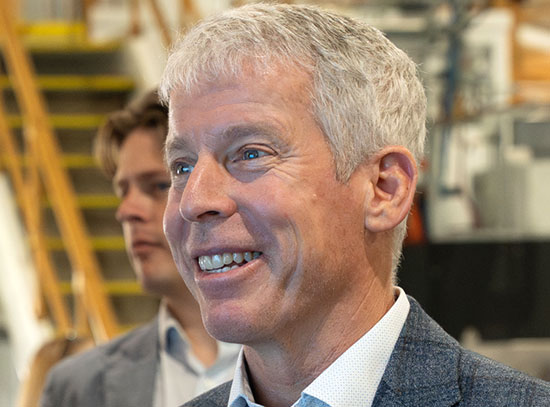Innovative Agreement to Help BNL Reduce Energy Use
January 24, 2014

The contract will enable the Lab to upgrade lighting systems in 17 buildings, replace and enhance energy management controls in nine buildings, and install a new high-efficiency water chiller at the Lab's Central Chilled Water Facility.
The U.S. Department of Energy (DOE) and National Grid recently signed a Utility Energy Service Contract (UESC) for infrastructure upgrades that are designed to substantially reduce the Lab's energy costs and greenhouse gas emissions. Under the UESC, National Grid will facilitate third-party financing for DOE in the amount of $12.2 million to implement lighting and other energy efficiency upgrades at the Laboratory. The loan will be repaid using the savings generated by the upgrades, which are expected to total more than $1.3 million each year.
"This contract is a win-win for the Laboratory and for DOE, as it will reduce the Laboratory's energy costs and also help us meet DOE and federal energy and greenhouse gas reduction goals," said Lanny Bates, Assistant Laboratory Director for Facilities and Operations. "It will allow us to leverage our operating funds to reinvest in much-needed infrastructure improvements, many of which would have been delayed or not funded at all without this type of arrangement in place."
UESCs are one of DOE's contract vehicles for implementing energy conservation and cost-savings projects at government facilities. It will enable the Laboratory to upgrade lighting systems in 17 buildings, replace and enhance energy management controls in 9 buildings, and install a new high efficiency 1,250-ton water chiller and related components at the Central Chilled Water Facility, which provides cooling water for lab processes and buildings.
The lighting upgrades include installing new fixtures and retrofitting existing fixtures, replacing existing lamps and ballasts with more efficient ones, and installing occupancy sensors and timers. The upgrades are expected to reduce the Laboratory's annual “energy intensity” (energy use per square foot) by approximately 11 percent and reduce greenhouse gas emissions by over 7,000 metric tons. These savings combined with other sustainability efforts will help the Laboratory meet its 28 percent greenhouse gas reduction goal for 2020, as well as a 30-percent energy intensity reduction goal by 2015.
2014-4596 | INT/EXT | Newsroom









